
There are lots of ways to improve PPC campaign performance by changing your keyword targeting strategy. You could get results by optimizing bids and audience targeting for broad match search terms with a high search volume. But it’s also possible to attract more traffic and optimize your ad spend by targeting long-tail keywords in Adwords.
Here’s everything you need to know about using long-tail keywords effectively to improve PPC performance.
Long-tail keywords are keyword phrases used to search for something very specific on the web. They usually contain at least three keyword terms derived from a head term. For example, a broad search term could be “marketing automation.” A long-tail keyword could be “marketing automation for Adwords PPC.”
Most paid search advertisers focus only on targeting broad search terms. But a huge portion of Google searches are long-tail queries. In fact, 70% of search traffic comes from highly specific four to six-word phrases:
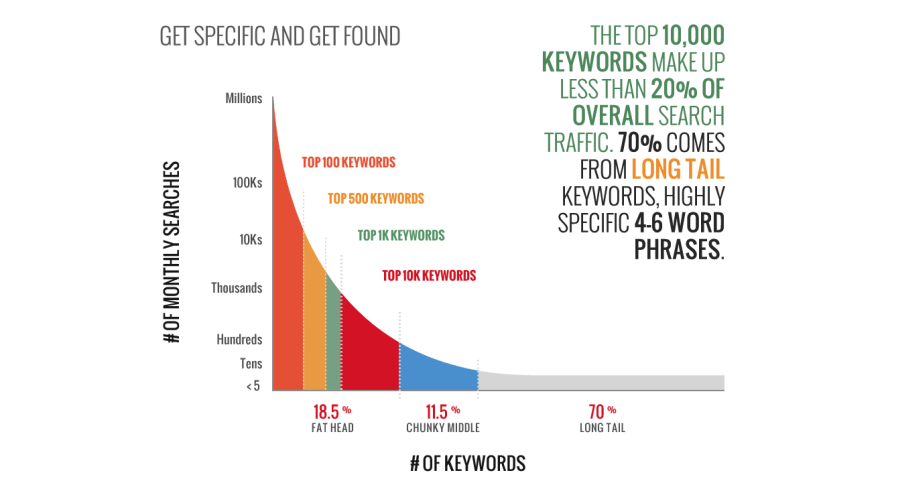
Targeting long-tail keywords is a very popular strategy for organic search engine optimization (SEO). Marketers tailor their content creation efforts to optimize for long keyword phrases.
Marketers who invest in both SEO and PPC often balance their long-tail targeting efforts by targeting competitive head terms with paid ads. This is a worthwhile strategy, but completely overlooks the opportunity long-tail keywords offer for PPC targeting and optimization.
Long-tail keywords are valuable in PPC for several reasons:
Long-tail keywords are more specific phrases, and end up having lower search volume as a result. Lots of people shopping online will search for the head term “wireless router.” Very few will search for “wireless router with USB 3.0.” Because long-tail phrases have a lower search volume, most PPC advertisers won’t bother to target them. So, if you do take the time to identify and target relevant long-tail keywords, you’ll have much less competition to rank in search results.
Google Ads calculates cost-per-click (CPC) for a keyword-based on demand. Highly competitive keywords with a high search volume will have a high CPC, while less competitive keywords will have a lower CPC. Targeting keywords with lower CPC and competition means you won’t have to pay a premium price to get your ads to rank highly. This also frees up more of your budget to pursue other advertising initiatives.
Long-tail keywords are highly targeted and specific, suggesting a searcher is close to the point of purchase. Look at the “wireless router” vs “wireless router with USB 3.0” example again. People who search for “wireless router” are likely hoping to learn more about the technology, or are at the beginning stages of understanding what kind of wireless router they want to buy. Someone who searches for “wireless router with USB 3.0” has already done their research. They know specifically what kind of router they want and are likely ready to make a purchase.
Targeting long-tail keywords is also an opportunity to optimize for voice search. Voice search has changed the kind of search queries people use to find the products and information they need. Several research studies have shown that voice search queries are significantly longer than text search:
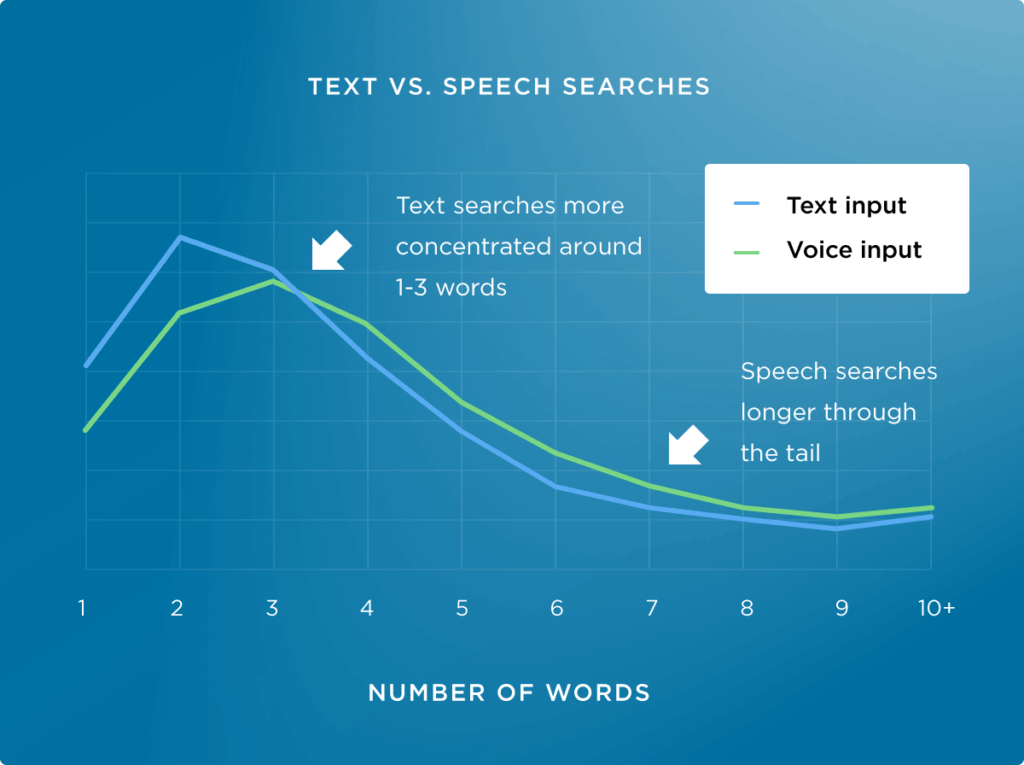
Considering that 20% of all Google mobile queries are voice search, it’s already a valuable strategy to optimize for.
The key to success is finding keywords that imply high purchase intent. Sticking with the wireless routers example: with your marketing content, you can target top-of-the-funnel keywords like: “will a new wireless router improve internet speed?”
These long-tail keywords suggest searchers are just starting to learn about marketing automation and aren’t ready to buy yet. If you want to drive high ROI from your PPC ads, then you’ll target bottom-of-the-funnel keywords like: “wireless router with parental controls and time restriction”.
Always consider searcher intent when researching long-tail keywords. Some keywords are great to target for SEO, while others are relevant for PPC. The types of long-tail keywords you want to target will also depend on your industry. If you sell e-commerce products, you’ll have many long-tail keyword opportunities with your product variants and specifications. You can include keyword terms such as:
For example, a retailer who sells children’s clothes could use a head term like “Polo shirt” and create a long-tail keyword like “Boys blue striped polo shirt.” Service or location-based businesses will target different kinds of keywords entirely. If location is important to your business, then you can use it to create long-tail keywords. A photography business located in Tacoma, WA could target “Tacoma, WA photography services.”
You can also create long-tail keywords using descriptors related to your industry or service. A marketing agency that specializes in promoting dentists, for instance, could target “dental practice marketing services”. Using these suggestions, you can brainstorm long-tail keywords then see if they have good search volume using Keyword Planner. There are indeed lots of ways to find new long-tail keywords to target using various tools.
Here are some options:
Google search is a great tool to help you find relevant long-tail keywords to target. Start out with Google’s autofill feature. Go to Google.com and type in a base keyword. Google will then suggest longer phrases based on your head term:
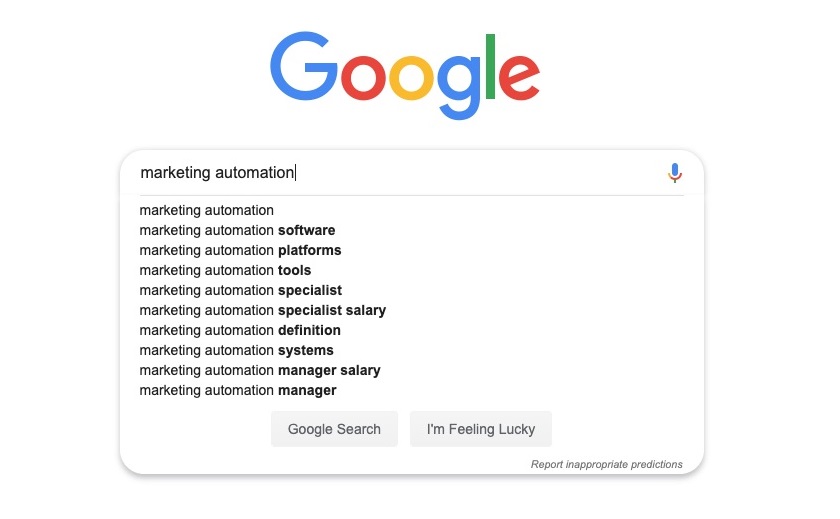
Google search also provides long-tail keyword ideas from related searches. Search for a root keyword related to your niche, then scroll down to the bottom of the search results to find it:
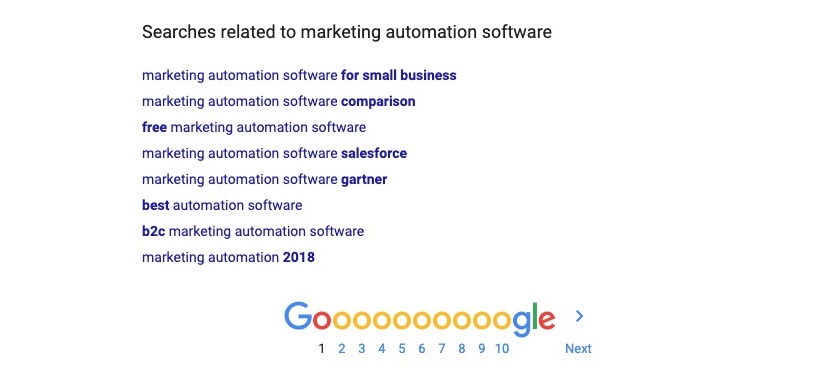
You can also dig deeper by taking Google’s suggested keywords and re-enter them into the search engine to find new ideas.
If you’re already running PPC campaigns, your current ads can be a goldmine of long-tail keyword ideas to target. The Search Terms Report will show you the actual search terms your current ads are showing for. Most of the search queries you’ll find here are simple variants of your main keyword. The report includes columns showing your target keyword, the customer’s actual search term, and the search term match type:
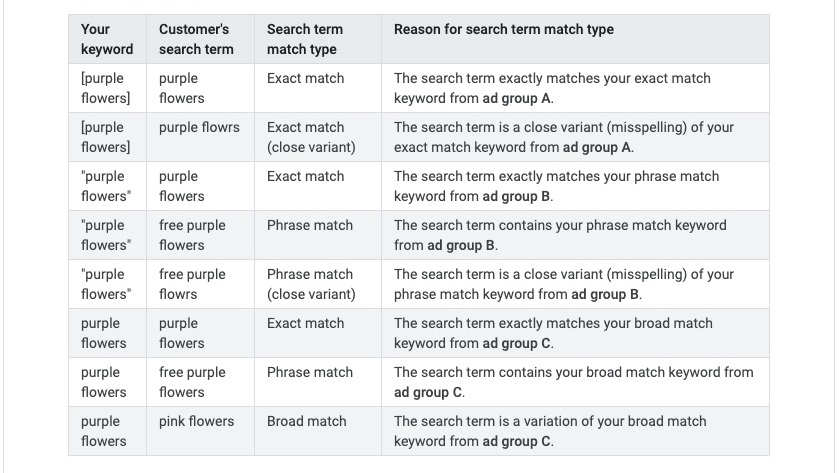
You can go through the Search Terms Report and look for any long-tail queries that are bringing up your current ads. As long as they’re relevant, these queries could be good to target directly.
Here’s how you find the Search Terms Report:
Keyword multiplier tools are a great option for e-commerce retailers who offer products in a variety of sizes, colors, models, etc. It’s an easy way to build a comprehensive list of long-tail keywords related to your product. There are a plethora of free keyword multiplier tools you can use out there. Just type your head term into one box, then any product variants you want to target in the other boxes (e.g. size, color).

The tool should generate a complete list of all the keyword variants you can target. You won’t want to target every keyword on your new list, but if you take the list to Keyword Planner and run a forecast, you can identify keywords that get enough searches per month to target.
KeywordTool.io is specifically designed to help you find all potential long-tail keyword variations for a base keyword. It utilizes Google’s autocomplete data to generate results, and you can also get suggestions from YouTube, Bing, Amazon, eBay, and more. All you do is type in a root keyword and select your language/location targeting, and it returns keyword suggestions:
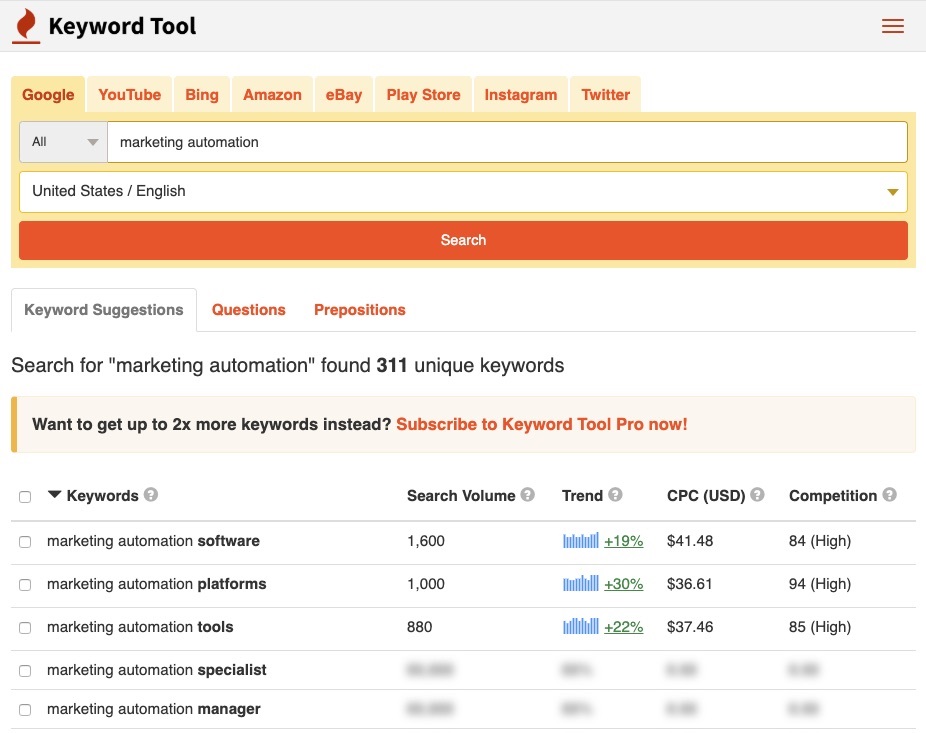
The paid version of KeywordTool.io also provides search volume, trends, CPC, and competition information.
Answer the Public is another free long-tail keyword research tool you can use. It focuses on illustrating what kind of questions people commonly ask online related to a root keyword. Most of the results you get from Answer the Public will be super long tail. These are top-of-the-funnel questions from people who are just starting to research.
Say, for example, you type in “wireless router” as your root keyword. You’ll see a lot of results like:
These keywords are great to target for SEO, but far too long-tail and top of the funnel to target with PPC. Answer the Public also returns prepositions and comparisons in addition to questions. Dig deeper into these and you’ll find relevant long-tail keywords for PPC targeting.
Answer the Public creates a cool keyword visualization:
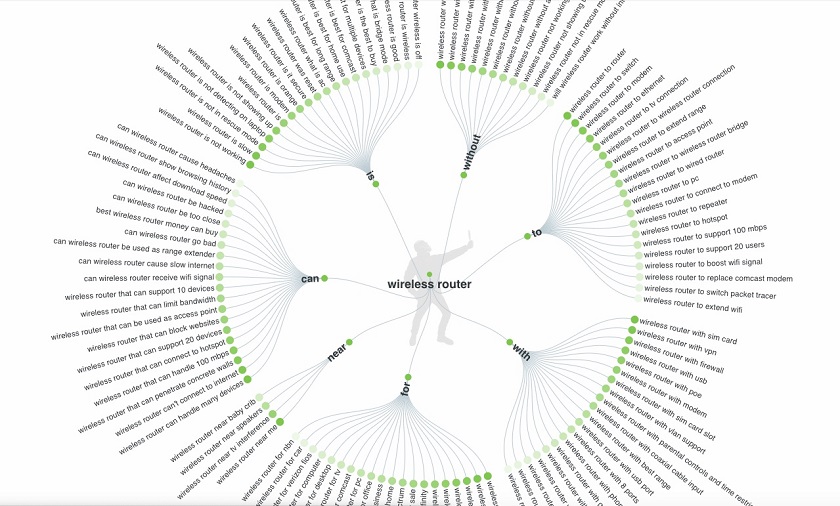
Or you can look at lists and export them:
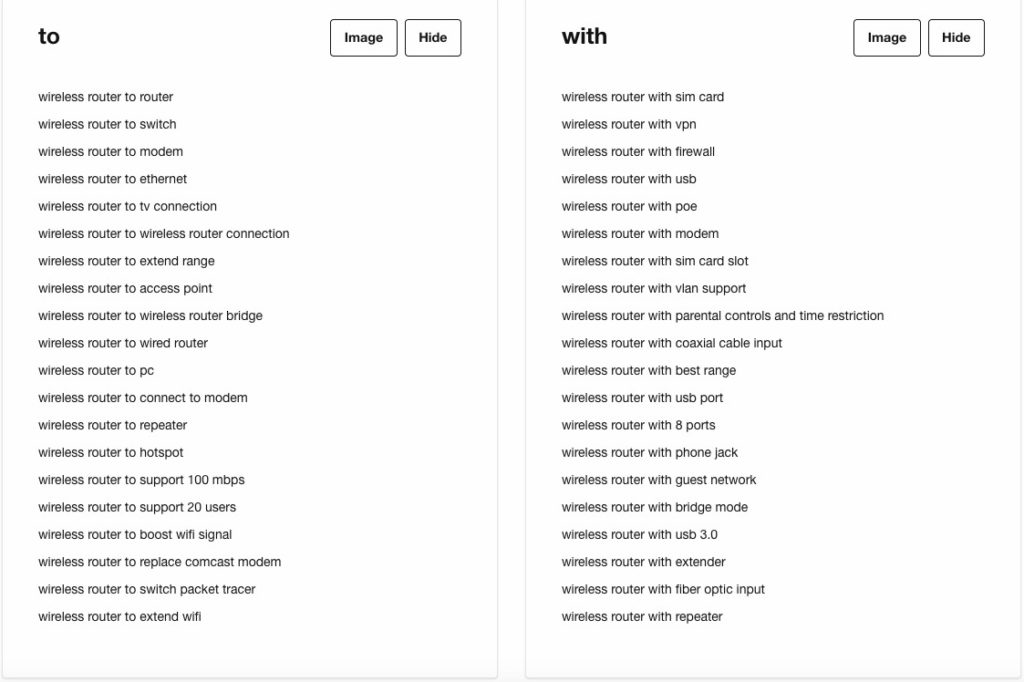
There are so many relevant long-tail keywords to target, it’s easy to clutter your Adwords account with them. Once you build a list of potential long-tail keywords to utilize, make sure you run them through Keyword Planner to ensure they have enough search volume to be worth your direct investment. Removing low search volume keywords from your list doesn’t mean you’ll have to miss out on this traffic. Make sure your ads qualify for all relevant long-tail keywords by creating two campaigns:
This way you can prioritize long tail through campaign bidding, and keep referring back to your Search Terms Report from your General Campaign to find new long-tail keyword opportunities.
Relevance is key to maximizing the value of long-tail keyword targeting for PPC. Optimize your ad copy by including your full keyword. With Google Shopping ads, include images relevant to your keyword targeting as well. For example, an ad targeting the keyword “olive green hiking boots” shouldn’t have an image of brown boots.
Targeting long-tail keywords in Adwords is a great way to optimize ad spend and attract more paid search traffic back to your business. By creating separate campaigns, it’s possible to measure the performance of long-tail keyword targeting against broad match keywords. Monitor performance, then add and remove keywords as necessary. Building an optimized long-tail keyword targeting strategy can bring you long-term returns from relevant, targeted ads.